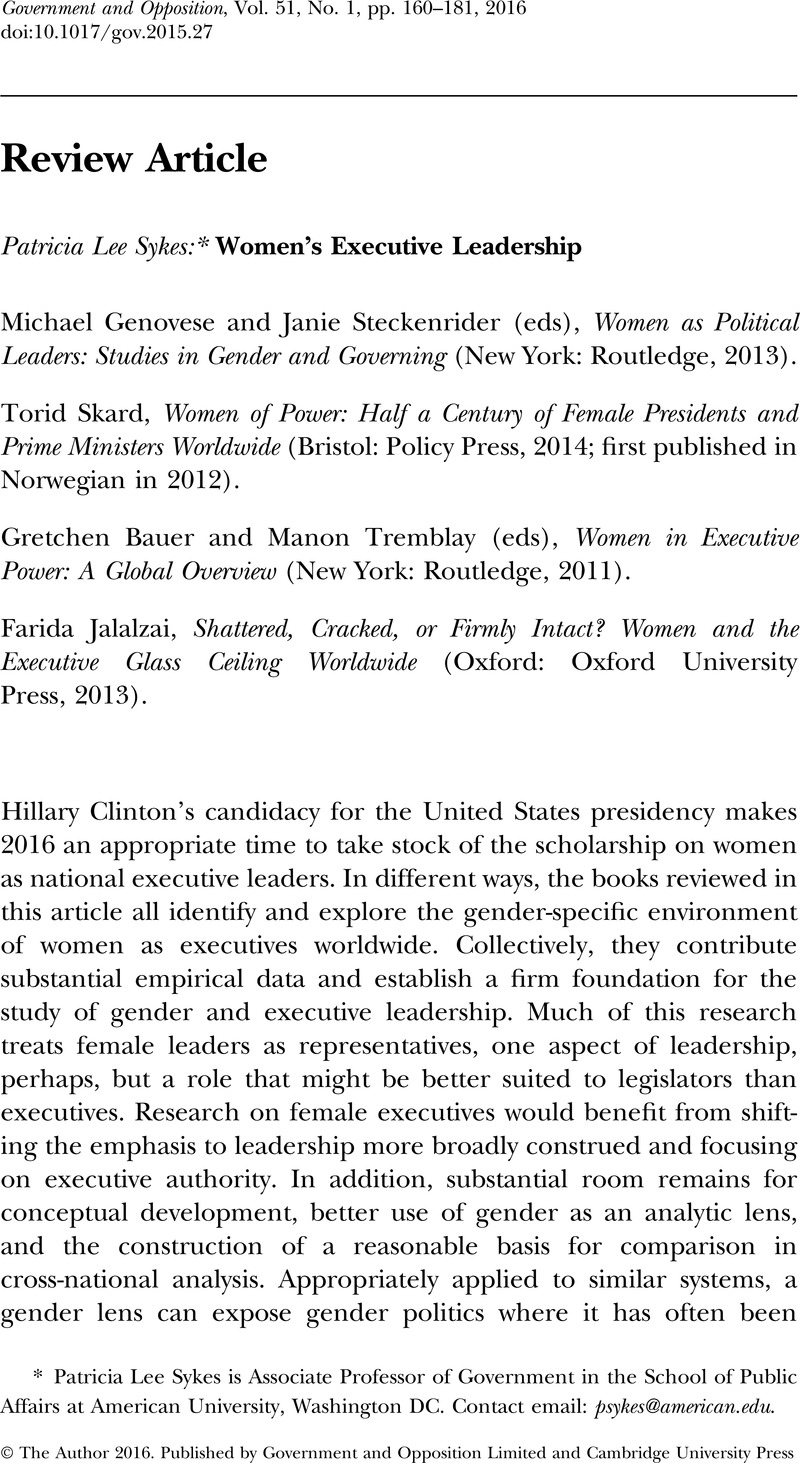Crossref Citations
This article has been cited by the following publications. This list is generated based on data provided by Crossref.
Baker, Kerryn
2018.
Great Expectations: Gender and Political Representation in the Pacific Islands.
Government and Opposition,
Vol. 53,
Issue. 3,
p.
542.
Helms, Ludger
Van Esch, Femke
and
Crawford, Beverly
2019.
Merkel III: From Committed Pragmatist to ‘Conviction Leader’?.
German Politics,
Vol. 28,
Issue. 3,
p.
350.
Worthy, Ben
and
Bennister, Mark
2021.
‘Dominance, defence and diminishing returns’? Theresa May’s Leadership Capital July 2016–July 2018.
British Politics,
Vol. 16,
Issue. 3,
p.
295.
Helms, Ludger
2023.
The Problem of Governing.
p.
97.
Worthy, Ben
Smith, Jessica C.
and
Richards-Gray, Laura
2024.
Remind you of anyone? Comparing the gendered heroic leadership of Margaret Thatcher and Theresa May.
British Politics,
Vol. 19,
Issue. 2,
p.
288.



